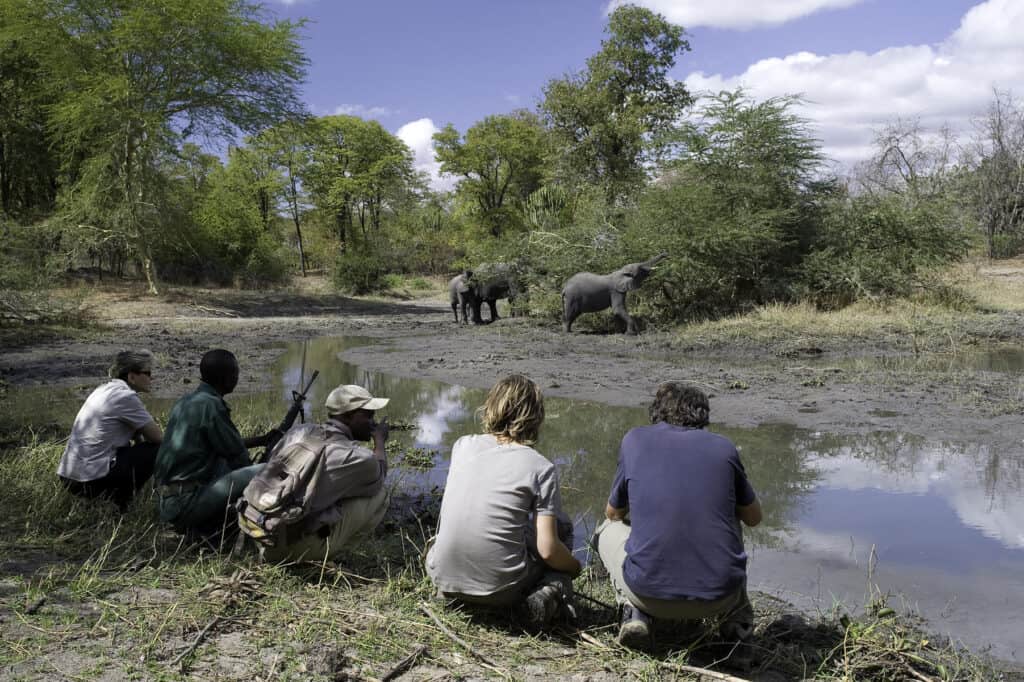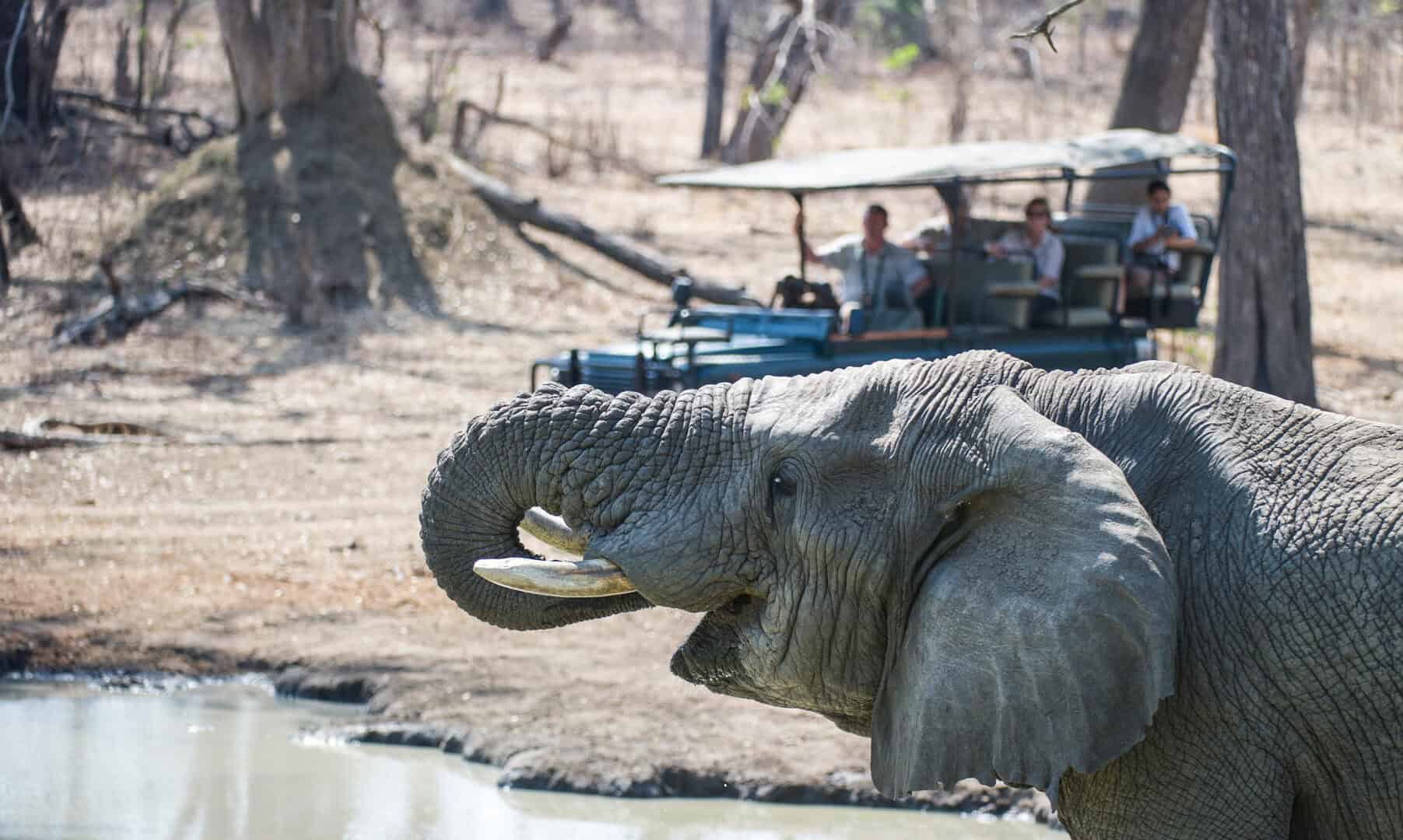There’s a stillness to Liwonde National Park that belies the life it holds. Towering borassus palms sway above fertile floodplains, baobabs stand like guardians of time, and the Shire River glints as it winds past hippos, crocodiles, and elephants cooling along its banks. At just 548 square kilometres, Liwonde, Malawi, isn’t vast by African standards, but that’s its magic. Its compact size concentrates the wildlife, making every game drive and boat safari feel rich with encounters.
Liwonde is more than a safari park. It’s a conservation success story, one that drew Prince Harry to join African Parks in relocating 500 elephants here. Endangered black rhinos have found safety, snares have been removed, and rangers have been trained to protect their future. You won’t find giraffes or leopards in Liwonde. This is a completely different ecosystem from the rest of Malawi; when combined with Majete Wildlife Reserve, it creates a wonderfully complementary safari experience that showcases the country’s diversity.
Must-Visit Areas and Safari Experiences in Liwonde

The Shire River
No Liwonde National Park safari is complete without a boat trip along the Shire. Glide past crocodiles, watch elephants drink at the water’s edge, and listen to fish eagles call overhead. It’s an intimate, eye-level way to experience the park’s lifeblood.
Baobab and Palm Plains
At the heart of Liwonde, sweeping borassus palms and ancient baobabs create a striking landscape where birdlife thrives. With more than 400 recorded species, ranging from bee-eaters to fish eagles, this is one of the top activities for birdwatchers and photographers in Liwonde.
On Foot with Rhinos
Tracking black rhinos on foot is a rare privilege. Guided by expert trackers, you’ll follow spoor in the sand and broken branches until you stand in the presence of one of Africa’s most endangered mammals – humbling, thrilling, and unforgettable.
Best Time to Visit Liwonde

The best time to explore Liwonde National Park is during the dry months from May to October, when wildlife gathers around the river. A safari at this time of the year can bring you incredible animal sightings.
From December to March the rains arrive, transforming the park into a lush green landscape, while occasional flooding can make roads difficult to navigate. During this season animals are more dispersed, so game viewing is less predictable. Some lodge and camp accommodations may close during this time. By April the rains ease, the ground begins to dry, and the park becomes easier to access once again.
Wildlife in the Park
With its concentrated size, Liwonde offers wildlife at close range. A stay at a lodge or camp here could bring you to sightings of large elephant herds moving between riverbanks and woodland, sable antelope grazing the plains, and hippos and crocodiles dominating the waterways. Endangered black rhinos add rarity, while hundreds of bird species paint the skies. Every day in Liwonde National Park, Malawi, feels different.
How to Get To Liwonde
Most travellers arrive in Blantyre to travel onwards to Liwonde. Private charters to nearby airstrips can be arranged for those preferring a quick connection and less time in transit.
A Park with Purpose
Liwonde National Park is more than just a base for safari – it’s a place rooted in purpose. This is a park where elephants were once under threat but now flourish, where rhinos have been reintroduced, and where birdlife fills the skies.
Spend a few days here, and you don’t just experience a national park. You leave with a sense of what’s possible when conservation, community, and wilderness come together – the true spirit of Liwonde in Malawi.
Start planning your Malawi adventure with Discover Africa. From choosing the perfect lodge or camp for the experience you want to ensuring every aspect of your journey is taken care of, we’ll tailor-make your ideal safari. Start planning now.
























